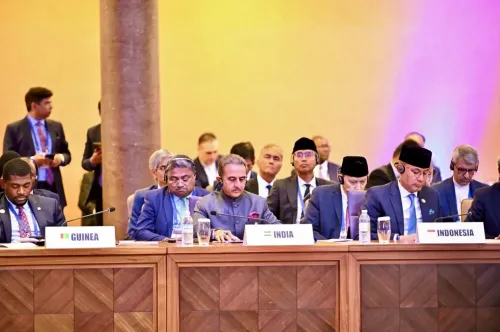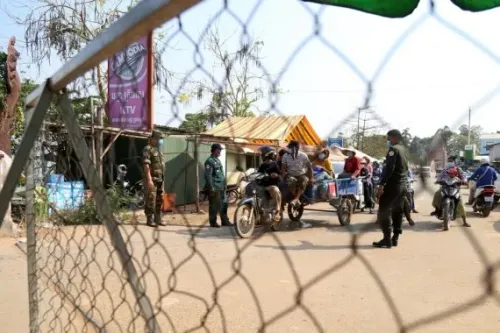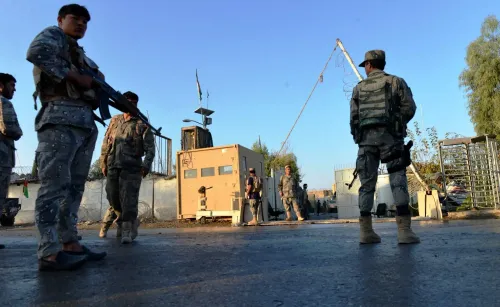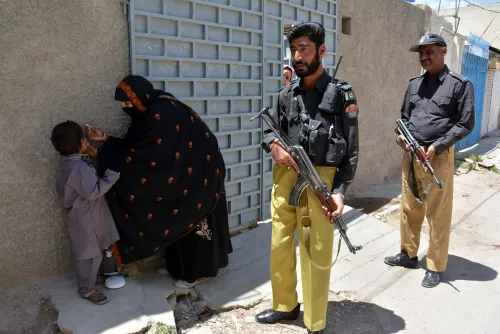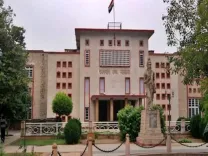What’s Behind the Renewed Fighting at the Af-Pak Border?
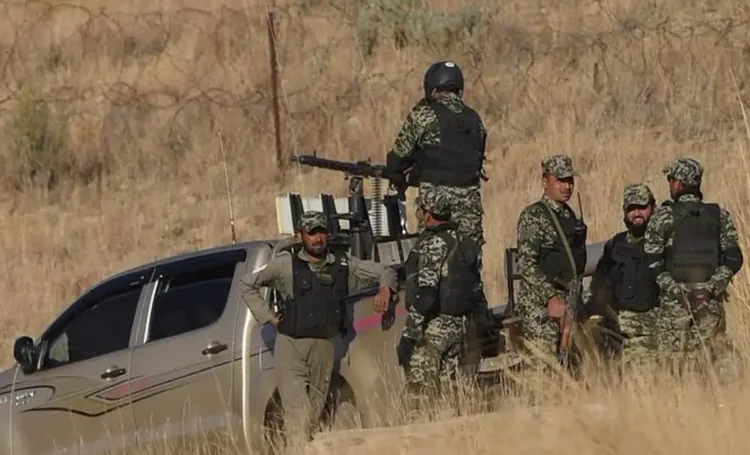
Synopsis
Key Takeaways
- Intense clashes have resulted in significant casualties on both sides.
- The UN has called for an immediate ceasefire.
- Pakistan and Afghanistan are accusing each other of aggression.
- Humanitarian impacts on civilians are severe, with disrupted livelihoods.
- International calls for diplomatic dialogue are growing.
Kabul, Oct 15 (NationPress) Intense clashes between Pakistani forces and Afghanistan’s Taliban militia along the Durand Line have resulted in numerous fatalities and hundreds of injuries, as reported on Wednesday.
Reports indicate that there were cross-border exchanges involving artillery and tanks. On the same day, Pakistan conducted an airstrike in Kandahar province of Afghanistan.
Pakistani officials claimed to have thwarted large-scale Taliban offensives near Spin Boldak and Balochistan, asserting that nearly 20 militia members were killed. However, both sides reported conflicting casualty figures amid the renewed hostilities following a brief pause.
The Taliban asserted that Pakistani forces initiated an assault on Wednesday, resulting in the deaths of at least a dozen civilians.
In response, Taliban spokesperson Zabihullah Mujahid stated on social media platform X, “In retaliatory operations, multiple Pakistani aggressor soldiers were killed, their posts and centers were seized, and weapons and tanks were captured by Afghan forces, leading to the destruction of many military installations.”
Social media accounts affiliated with the Taliban also shared videos purportedly showing the capture of Pakistani soldiers. They claimed to have damaged part of the border fence at Spin Boldak, which connects the Baluchistan district of Pakistan.
The United Nations Assistance Mission in Afghanistan (UNAMA) announced on social media that it is still assessing the full extent of civilian casualties, urging all involved parties to cease hostilities to safeguard civilians and avert further loss of life.
According to the UN, numerous Afghan civilians have been killed or injured due to recent cross-border confrontations between Afghanistan’s de facto security forces and the Pakistani military.
In the meantime, Islamabad has briefed foreign diplomats to clarify what it refers to as “legitimate security concerns” and the necessity of maintaining territorial integrity.
Afghan officials and Taliban representatives have accused Pakistan of excessive force and reported civilian casualties. Both Qatar and Saudi Arabia have urged the conflicting parties to de-escalate and foster dialogue.
Beijing has called on both Kabul and Islamabad to ensure the safety of Chinese personnel engaged in various projects across Afghanistan. The growing discord between Islamabad and Kabul has led to ongoing tensions, resulting in multiple skirmishes along the contested border.
Pakistan’s aerial bombardment, aimed at a Tehreek-e-Taliban Pakistan (TTP) leader, coincided with the visit of Afghanistan’s Foreign Minister Amir Khan Muttaqi to India.
After talks with India’s Foreign Minister S. Jaishankar, a joint statement was issued, reiterating the stance that Jammu and Kashmir is an integral part of India, much to Pakistan's displeasure.
Following the border skirmishes, Kabul canceled a planned visit from a Pakistani delegation. Taliban fighters attacked Pakistani outposts at the border late on Saturday, October 11, claiming it was a response to Islamabad’s recent surge in bombings on Afghan cities, including the capital, Kabul.
Humanitarian organizations have cautioned that such confrontations jeopardize the already precarious civilian livelihoods and cross-border trade, with reports indicating closed border crossings.
Islamabad has accused the Afghan Taliban regime of harboring TTP fighters, who have intensified their attacks within Pakistan. This has led to the expulsion of thousands of Afghan refugees from Pakistan.
The Mujaheddin, an armed militia, was reportedly supported and trained by Pakistan’s Inter Services Intelligence (ISI), with assistance from the US Central Intelligence Agency (CIA) during covert operations against Soviet forces in Afghanistan until 1989. The Taliban and TTP are considered offshoots of this group.

